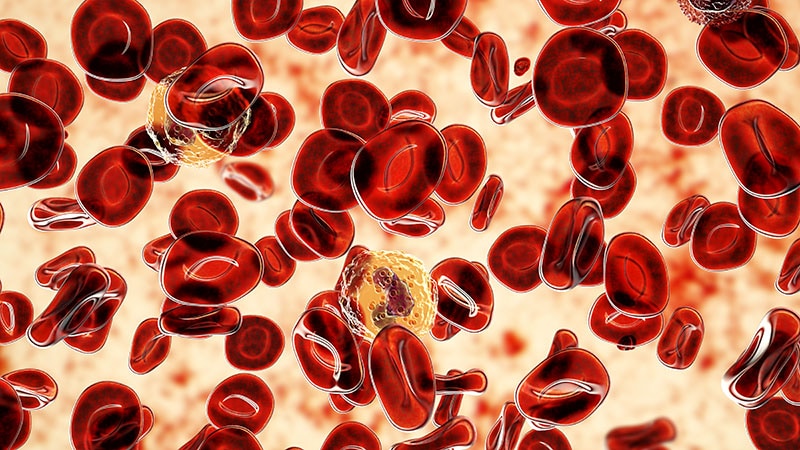[ad_1]
Over thousands of years, evolution has helped the Aymara people of the high plains of Andes mountains adjust to altitudes as high as 14,400 feet (2.75 miles) above sea level. This indigenous population possesses high levels of hemoglobin, which means that their bodies are especially well equipped for delivering sparse oxygen to the cells that need it.
Now, the unique Aymaran biology is gaining attention on the world’s scientific stage. Armed with new findings, hematology researchers hope the unique genetic traits of Aymarans will offer new insight into myeloproliferative neoplasms such as polycythemia vera (PV) and essential thrombocythemia (ET) — and perhaps more common diseases, too.
Specifically, early findings are raising hopes that the genetic traits might endow humans with a biological superpower: A pumped-up ability to control inflammation.
“We believe that the population who inherited this gene would be less likely to get the these disorders and have a better course,” said Josef T. Prchal, MD, of Huntsman Cancer Institute, University of Utah, Salt Lake City, Utah, senior author of a study presented at December’s American Society of Hematology (ASH) 2024 Annual Meeting. He spoke in an interview and in a presentation at ASH.
Adjusting to a Low-Oxygen Environment
People who live at high altitudes have adjusted in special ways to low oxygen levels. Tibetans, for example — who reside in the Himalayas — have wider blood vessels, which allow more oxygen-rich blood to flow through the body.
Aymarans, who live in the Andes mountain range of western South America, have evolved their own unique adaptation to life at the top of the world: They have high levels of hemoglobin, a protein that transports oxygen through the body.
Prchal’s team examined data from inhabitants in La Paz, Bolivia — the highest city of over one million people in the world — and tied the hemoglobin levels to variations in the NFKB1 gene.
These variations are present in 90% of Aymarans, about 30% of Europeans, Hispanics, and Asians, and less than 1% in Africans. The Prchal’s team also found evidence that the genetic trait suppresses inflammatory gene expression.
What might that mean for hematology, in which inflammation can play a devastating role? To find out, the researchers turned to the blood cancers known as myeloproliferative neoplasms, which Prchal studies.
Too Many Blood Cells
Myeloproliferative neoplasms spur the bone marrow to create too many blood cells, leading to risk for blood clots, bleeding, and acute myeloid leukemia.
The diseases are estimated to strike 20,000 people a year in the United States, according to the Leukemia & Lymphoma Foundation. While the 5-year survival rates for PV and ET are similar to those of similar people without the disease, 25-year survival is much lower.
For the new study, the team genotyped 30 patients with PV and 15 with ET and found that those with the genetic trait had lower levels of inflammatory, prothrombotic, and hypoxia-inducible factor activity.
Researchers also examined how well patients responded to ropeginterferon alfa-2b (Ropeg), a common treatment for the pair of diseases. They found that the genetic trait was more common (58.6%) in patients who reached complete hematologic response vs 33.3% of those who didn’t reach that level of response or had cytopenia (33.3%, P
Up Next: Expanding Beyond Blood Cancer
The study findings suggest that genetic testing can reveal which patients with PV and ET have the Aymaran genetic trait. Then “we can predict who will have high inflammation or low inflammation, and who may have a better response to medications such as interferon,” said study co-author Jihyun Song, PhD, also of the University of Utah, in an interview.
Meanwhile, further research could reveal the molecular pathway that lowers inflammation and lead to development of new drugs, Prchal said.
For now, researchers are trying to confirm whether the genetic trait actually improves outcomes in PV and ET by analyzing large numbers of patients.
“Do those who inherit the trait have “increased or decreased risk of thrombosis?” Prchal asked. “Are they less likely to transform to fatal acute leukemia or myelofibrosis? Are they less likely to get any other mutation?”
The University of Utah team is also exploring the potential impact of the genetic trait on other blood disorders in which inflammation plays a role.
“For example, after transplantation, the major complication is graft-vs-host disease, which is driven by inflammation,” Prchal said. “We already started a collaboration with our bone transplant colleagues that will test for this gene. We speculate — and it remains to be proven — that if you inherit this Aymara gene, you will do much better after transplantation.”
Prchal disclosed research funding from PharmaEssentia and AbbVie. Song had no disclosures.
[ad_2]
Source link : https://www.medscape.com/viewarticle/high-andes-possible-clue-blood-cancer-emerges-2025a10004sk?src=rss
Author :
Publish date : 2025-02-25 12:04:39
Copyright for syndicated content belongs to the linked Source.
